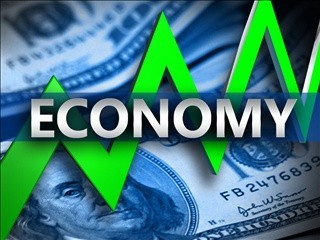The Commerce Department said Thursday that builders started construction at a seasonally adjusted annual rate of 853,000, a 16.5 percent drop from the March pace of 1.02 million. Applications for building permits rose 14.3 percent to a rate of 1.02 million, the most since June 2008.
Builders are benefiting from a sustained rebound in housing that began a year ago. Steady job growth, rock-bottom mortgage rates and rising home values have boosted demand.
New construction of single-family homes declined 2.1 percent in April to an annual rate of 610,000. Multi-family construction, which is volatile, plunged 39 percent to a rate of 243,000. That drop more than reversed a 26 percent surge in March.
Housing starts fell last month in every region except the Midwest, where it rose 11 percent compared with March. New construction dropped 28 percent in the South. It fell 13 percent in the Northeast and 6 percent in the West.
Even with the sharp drop in construction last month, confidence among builders is rising. The National Association of Home Builders says its builder confidence index rebounded in May to a reading of 44, up from 41 in April. The outlook for sales reached its highest point in more than six years.
New-home sales rose 1.5 percent in March to a seasonally adjusted annual rate of 417,000. That's still below the 700,000 pace considered healthy. But sales are 18.5 percent higher than a year ago.
Several major homebuilders have reported strong annual increases in orders for the first three months of the year. That includes the start of the spring home-selling season, the traditional peak period for sales.
Ryland Group Inc. said this week that orders in April jumped 59 percent from a year earlier. And over the first three months of this year. orders have jumped 54 percent.
Though new homes represent only a fraction of the housing market, they have an outsize impact on the economy. Each home built creates an average of three jobs for a year and generates about $90,000 in tax revenue, according to data from the homebuilders' group.
CONSUMER PRICES FALL
A plunge in the cost of gas drove down a measure of U.S. consumer prices last month by the most since December 2008. Excluding the drop in fuel costs, prices were largely unchanged.
The consumer price index fell 0.4 percent in April from March, the Labor Department said Thursday. The main reason the index fell was that gas prices plunged 8.1 percent.
For the 12 months that ended in April, overall prices rose 1.1 percent - the smallest year-over-year increase in 2 1/2 years.
Excluding volatile energy and food costs, "core" prices ticked up 0.1 percent last month. Core prices have risen only 1.7 percent in the past 12 months. That's just below the Federal Reserve's 2 percent inflation target.
Scant inflation is allowing the Fed to continue its extraordinary efforts to stimulate the economy. Worries about lower inflation or even deflation might push the Fed to step up its low interest-rate policies to stimulate more borrowing and spending and push prices higher.
Deflation is a destabilizing cycle in which prices and wages fall steadily. It can slow economic growth.
Unusually low inflation means consumers can stretch their paychecks and buy more goods and services. But if it were to fall further, it could stoke fears of deflation.
"Subdued demand means that core inflation is likely to edge lower, as retailers will be forced to pass previous falls in raw material costs onto customers," Paul Dales, an economist at Capital Economics, said in a note to clients. "The Fed may soon put more emphasis on fading inflation trends."
A little inflation can be good for the economy, because it encourages businesses and consumers to spend before prices rise further.
Aside from sharp swings in gas prices, consumer and wholesale inflation has been mild this year. The combination of modest economic growth and high unemployment has kept wages from rising quickly. That's made it harder for retailers and other firms to raise prices.
The average national price for a gallon has fallen since reaching a peak this year of $3.79 on Feb. 28. The average price was $3.60 a gallon on Thursday, according to AAA.
The Fed has said it will keep the short-term interest rate it controls near zero at least until the unemployment rate falls below 6.5 percent, as long as the inflation outlook remains mild.
It is also buying about $85 billion a month in Treasury and mortgage bonds to try to keep longer-term rates low. That's intended to encourage borrowing and spending, which drives economic growth.
Many economists expect the Fed to begin to taper those purchases by the end of the year, particularly if hiring stays healthy. But too-low inflation could encourage the Fed to maintain or even step up the pace of its purchases.

http://accesswdun.com/article/2013/5/261576
